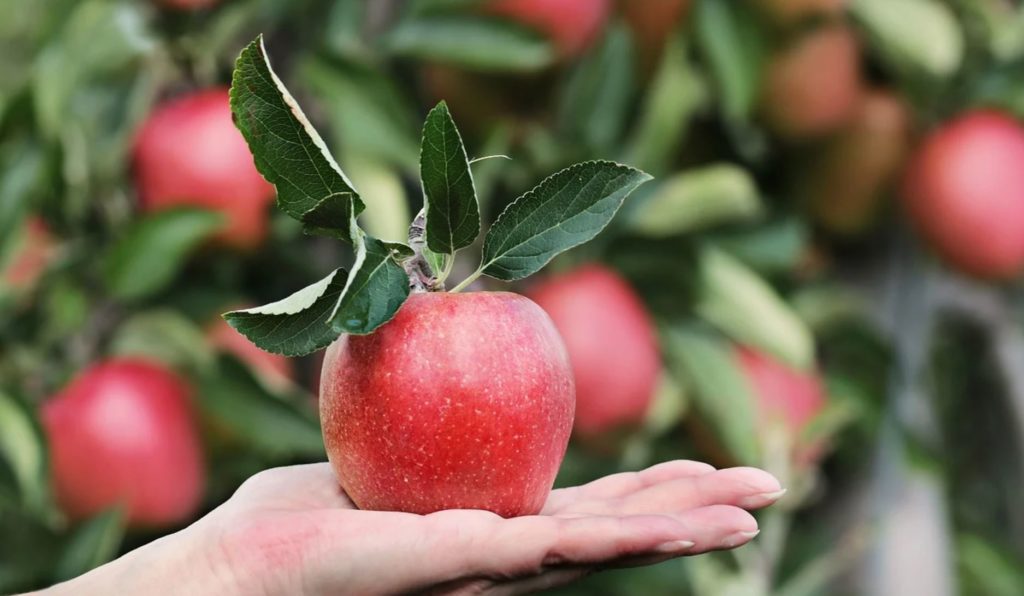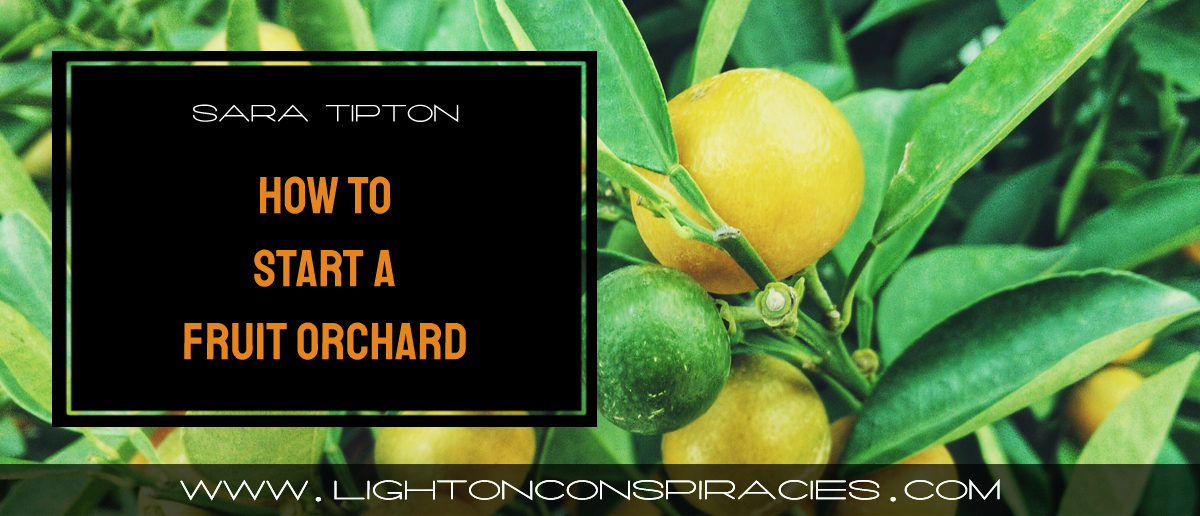 By Sara Tipton
By Sara Tipton
Nothing is more freeing than growing your own food. If you’ve already started growing vegetables in a garden, you know how good it is for your health and mental wellness, so why not try a fruit orchard?
A home orchard can supply you with delicious, low-cost fresh fruit, attract pollinators, and provide shade and beauty to your property. It requires a relatively small investment of money but a large investment of time and patience. The time and patience that you put in are more than worth it, however.
Being more self-reliant can change your life! It will offer a wonderful source of freedom and help you save some money in the long run.
How To Choose Trees
Not all fruit will grow well in all areas, but the same is true of vegetables. You should visit USDA Plant Hardiness Zone Map to learn what agricultural zone you’re in and talk to those at greenhouses or nurseries to get a better idea of what will row well. Nurseries should be able to provide you with information about the zones where their plants will grow. For example, we live in zone 4, and that means red and golden delicious apples are some of the best to grow in that climate. If you live in a colder climate, apple trees might be a great choice in general because they are hearty. Cherry and plum trees will also be able to withstand some brutal cold, but you should make sure before you start to plant them.
In the case of starting an orchard, you should consider ordering young trees, not seeds; seeds will grow into fruit trees but they won’t necessarily have the same variety of characteristics as their parent plants. For those short on space, consider growing dwarf fruit tree varieties that are self-pollinating. This will help you make use of the space that you have.
Where to Plant an Orchard
Once you know what will grow well, you should be able to get some kind of an idea of how much space you’ll need. Some trees can get pretty big! I remember a plum tree my grandmother has when I was a kid was so big, we played hide and sneak in it! Cherry trees need to be spaced 15-25 feet apart, for example. Make sure you get a plan mapped out before you plant.
Book Ad
Leaves From The Tree of My Life
by Bente Dammegard
Written a few years before the author Bente Dammegaard left this world: “At the moment I am 81 years old and live on the beautiful island of Mallorca, Spain. When I wrote the book I looked back on my life wondering how on earth I had succeeded in collecting so many years. Along the way I have become the mother of three wonderful and very different children, have spent a lot of my life as a translator and, as such, have translated books, films, comics and scientific texts. I have been an instructor of non-violent jiujitsu, been a teacher of languages for adults and never had a steady job but always been a free lance person, that is to say I have worked my bum off when others were on holiday, been a tourist guide at an old fortress/castle – which the Swedes built against us Danes, and I was the first and only one to conquer it. I am a Dane by birth, moved to Sweden in 1966 with husband and three children, lived there for more than 35 years and moved to Spain because the ice and snow on the roads of Sweden were just too much. I am now, more than ever, conscious of the fact that I – and nobody else in the universe – am responsible for how my attitude towards life is. I can choose to see myself as a victim and feel sorry for me, or I can see myself as surrounded by miracles, which I truly am, and be grateful.”
You should also choose a site for your orchard that has well-drained fertile soil and full sun. Avoid frost pockets and areas exposed to high winds. Don’t plant early-flowering varieties on south-facing slopes, where they may bloom too early and then lose their flowers (and thus that year’s fruit) to a late frost.
Planting Tips
Plant in early spring while trees are still dormant. Dig large holes, twice as wide and fully as deep as the root system, and add compost and other soil amendments around tree roots. Don’t let roots get dried out as you get your trees into their holes. Water well. Once the hole is filled, surround the tree with organic mulch.
Did you know that you can add companion plants are the base of fruit trees to help them grow? Companion plants are a great way to prevent weeds from taking over, attract more pollinators, and create a living mulch to help shade the delicate root structures of young trees. Here are some of our favorites: comfrey, lupine, marigold, nasturtiums, marigolds, echinacea, and fennel.
Maintenance of an Orchard
Fruit trees will need to be cared for much like a garden needs weeding. Here’s a video on how to prune young fruit trees. They will need to be pruned to remove any dead wood and establish a healthy and accessible shape. Pruning should be done in spring while the trees are still dormant. Do a little research online for pruning guides for each type of fruit tree you have selected. You may already know what you need to do if you researched the best fruit trees for your agricultural zone! Also, bear in mind that all fruit trees are susceptible to pests and diseases, varying by type and area. There are usually natural ways to help your trees if you happen to notice a pest or disease. If you have already been gardening, you may know what type of soil you have and the likelihood of getting any pests.
Bonus Tip
Don’t look at planting fruit trees as “just another chore.” Care for any tree or plant that provides you with nourishment with gratitude, love, and respect. I know it sounds crazy, but the more love you can pour into your plants, the better they will sustain you. This goes for animals too. We tell our ducks that we love them and they provide us with a daily source of sustenance. If you still don’t think it’s a good idea to be thankful to the plants and animals that help sustain our life, watch the video below:
Original Article












